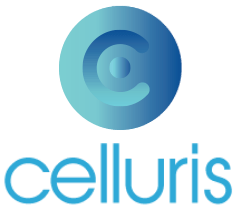Gliomas are the most common form of malignant central nervous system tumors, affecting both adults and children, though they are more frequently diagnosed in adults. These brain-located tumors are classified as either circumscribed, meaning benign and treatable with surgery, or diffuse, which are malignant and require additional treatment. In the first case, the standard treatment for low-grade gliomas (LGG) typically involves surgical resection. High-grade gliomas (HGG), however, also require chemotherapy and radiotherapy.
According to the latest classification from the World Health Organization, new molecular biomarkers are being studied for the diagnosis and treatment of gliomas. Among the emerging targeted treatments are immune checkpoint inhibitors, therapies affecting Tumor-Associated Macrophages (TAMs), dendritic cell vaccines, and CAR-T cell therapy.
Use of Immunotherapy in Gliomas
The study “Glioma Targeted Therapy: Insight into Future of Molecular Approaches” highlights the most common types of immunotherapies being directed towards glioma treatment. Researchers point to four key approaches.
The first example includes immune checkpoint inhibitors such as nivolumab and pembrolizumab, which block PD-1/PD-L1, while ipilimumab blocks CTLA-4, enabling a more robust immune response against the tumor.
The second example targets the function and proliferation of tumor-associated macrophages (TAMs). CSF-1R inhibitors, for instance, can reduce tumor growth.
Dendritic cell vaccines, such as DCVax-L, use dendritic cells loaded with tumor antigens to stimulate a specific immune response.
Lastly, CAR-T cell therapy involves T cells modified to express specific receptors, such as IL13Rα2, that target tumor cells.
CAR-T and Gliomas
Studies published in scientific journals show that the use of CAR-T cells (chimeric antigen receptor T cells) in the treatment of gliomas, particularly glioblastoma, is an evolving research area. While CAR-T cells have demonstrated efficacy in hematologic malignancies, their application in solid tumors like glioblastoma remains challenging due to tumor heterogeneity and an immunosuppressive microenvironment.
Key Points on CAR-T Use in Gliomas:
Recent studies have shown that CAR-T cell therapy can be effective in glioblastoma patients, even in recurrent and advanced cases. The INCIPENT study indicated that CARv3-TEAM-E cells exhibited a favorable safety profile, with manageable adverse events.
A study published in The New England Journal of Medicine reported a case of a 72-year-old glioblastoma patient whose tumor regressed after receiving a modified version of CAR-T therapy, with results sustained for approximately three months.
Challenges in CAR-T Treatment
Research highlights that tumor heterogeneity and the immunosuppressive microenvironment are limiting factors in the use of CAR-T cells in solid tumors. The more heterogeneous and immunosuppressive the environment, the harder it is to find specific and safe antigens to target.
Researchers are exploring various strategies to overcome these challenges, including modifications to CAR-T cells to enhance their effectiveness in solid tumors.
Conclusion
In summary, the use of CAR-T cells in glioma treatment is promising but remains in developmental stages, requiring further studies to ensure lasting and effective responses.
Read more on our blog about promising CAR-T technology advancements in solid tumors.
References
Tiwari, P., Tamrakar, S., Wankhede, S., Das, P., & Gadpale, M. (2022). Glioma Targeted Therapy: Insight into Future of Molecular Approaches. Cellular and Molecular Life Sciences, 79(1), 1-26. Available at https://pubmed.ncbi.nlm.nih.gov/35135556/.


